Everything You Want To Know About 2021 Triumph Trident (Except What It's Like To Ride)

Triumph is shaking up the middleweight market with a historic namesake
“There is no such thing as a new idea. It is impossible. We simply take a lot of old ideas and put them into a sort of mental kaleidoscope. We give them a turn and they make new and curious combinations. We keep on turning and making new combinations indefinitely; but they are the same old pieces of colored glass that have been in use through all the ages.” – Mark Twain
Heritage and history are excellent attributes to replicate in motorcycling – assuming you have either in the first place. The 2021 Triumph Trident may be a new model, but it’s taking a page straight out of the Triumph history book. Let’s rewind to the 1960s and look at the motorcycle landscape of the time. The market was filled with single-cylinders and Twins from a variety of manufacturers, many of whom, unfortunately, aren’t around anymore.
Looking to shake up the market, in 1968 Triumph introduced a new model: The Trident (also sold from BSA as a Rocket 3). Powered by a three-cylinder engine, it provided an intriguing alternative to the Singles and Twins of the era with performance that later went on to win at the Isle of Man from 1970-1975. Fifteen years later Triumph brought the Trident name back in 1990 with a naked bike, again sporting three cylinders.
Present Day
Twenty years on from the re-introduction of the Trident, Triumph’s at it again with a re-re-introduction. It’s starting to sound like a broken record whenever someone, myself included, goes on and on about the joys of the middleweight twins class, especially when it comes to bang for your buck. Hitting that Goldilocks zone of power, performance, and price, any rider over the past two decades who has come up on the likes of the Suzuki SV650, Yamaha, FZ/MT-07, or Kawasaki Ninja/Z650 will tell you just how fun and affordable these bikes are.
Recognizing an opportunity to enter a market, disrupt the twin-cylinder status quo (sorry Honda CBR650R), and repeat a piece of its own history, Triumph’s here to shake up the middleweight twins market – with a three-cylinder. Say hello to the 2021 Triumph Trident, coming in at $7,995 to start, slotting it in nicely with the bikes mentioned above.
As Triumph takes another turn at the Mark Twain kaleidoscope, this time around the combination of glass pieces comes together to make a roadster aimed squarely at riders looking to graduate to their first “big bike” after getting their feet wet with their first motorcycle. Triumph’s mission was to create a motorcycle for this class that could deliver on looks, performance, and maybe most importantly – value.
From a design standpoint, the Trident embodies the roadster look, with its minimalist bodywork, neutral seating position, and handlebars. Then again, to meet the price point and group itself within the establishment, it also uses basic suspension and brake components (more on those later). Nonetheless, it still looks attractive, with a modern take on classic roadster styling that seems unmistakably Triumph.
Now, there’s an obvious area where the Trident is distinctly different from the competition: its engine. With three cylinders displacing a total of 660cc, the Trident’s engine is derived from the 675cc three-cylinder of yesteryear, just like the myriad of other bikes within Triumph’s triple-cylinder lineup.
However, this new engine features a smaller bore and longer stroke compared to the Street Triple. Among the 67 new components compared to the Street Triple, the Trident also gets a different crankshaft, alternator, camshaft, cylinder head, cylinder liners, a change in transmission input shaft, new throttle bodies and airbox, along with an exhaust, header, and silencer – and that’s clearly just a sampling of the 67 new parts.
Nonetheless, modern Triumph triples are known for their cool character and sweet sounds, providing more punch off the bottom than a four-cylinder and more top-end than a Twin. In this form the Trident’s 660 engine is rated at 80 horsepower at 10,250 rpm and 47 lb-ft of torque at 6,250 rpm. Triumph says this Triple has more bottom-end torque than the Street Triple S, with 90% of its torque available as low as 3,600 rpm.
To help keep costs down and meet that sub-$8,000 target, the new engine sits in a new steel frame (it’s aluminum on the Street Triple) mated to a steel swingarm. Like others in this class, suspension is pretty basic, with a non-adjustable 41mm inverted Separate Function fork and preload-adjustable shock, provided by Showa. Braking is handled by a pair of 310mm discs clamped by axial-mounted Nissin twin-piston pin-slide calipers. A 255mm disc and single-piston Nissin caliper sits out back. ABS is standard on the Trident, as is now the norm to meet homologation standards, and can’t be turned off.
Interestingly, the Trident does not use an IMU, and therefore does not come with cornering-ABS. However, Steve Sargent, Chief Product Officer for Triumph, explained that the ABS and traction control parameters are set with the bike at full lean during testing. In essence, providing a poor-man’s version of cornering-ABS. All I know is I don’t want to be the test rider tasked with that job!
Attracting newer riders to the brand means, apart from appealing looks and a capable yet friendly engine, the Trident has to be inviting. That starts when the rider throws a leg over it and discovers the 31.7-inch seat height – nearly a full inch taller than the Suzuki SV650. The seat/fuel tank junction appears to be relatively narrow, which should help get the rider’s feet on the ground comfortably. At 417 pounds wet, the Trident slots right in amongst its competitors from a weight standpoint. Judging by the pictures, and considering the competition, the rider triangle looks to skew toward the comfortable side with a little bit of sport thrown in for good measure. The bars raise the rider up so they’re not hunched over and appear to be fairly broad for good leverage while riding.
What sets the Trident apart from the competition are the electronic settings available. The ride-by-wire throttle allows for two different ride modes, Road and Rain. Both modes provide full power, Rain just gets there a little more gently. Each mode is also pre-programmed with specific traction control settings that can be turned off entirely. Unfortunately, TC settings cannot be adjusted separately from the ride modes which, honestly, probably won’t matter to a prospective buyer in this class.
From the cockpit, you’re greeted by a single round instrument bezel that reveals a TFT display once the bike is keyed on. All of the bike’s controls are manipulated and viewed from this single screen, which is pre-programmed to accept the My Triumph accessory that allows for Bluetooth connection to communicators, phones, or even GoPro cameras – a clever feature considering the youth market the Trident is aiming for.
While connecting to electronics is a nice feature for the youth crowd, Triumph wants to appeal to the budget-conscious rider beyond the initial sale with its claim that the Trident comes with incredibly low cost of ownership. For example, Triumph claims the lowest workshop time in the category as, over a three-year service timeframe which includes a 600-mile service, three annual services, a set of brake pads, a new chain and sprocket, and one full brake fluid change, the Trident will require 8.3 total shop hours compared to a range of 11 hrs to 15.8 hrs total required by its closest competitors.
Beyond that, the Trident leads the class with its 10,000-mile service intervals which Triumph claim is 25%-65% better than its rivals. Lastly, the Trident, like all Triumph motorcycles, comes with a two-year, unlimited mileage warranty with an extra year or two available as an option if you want additional peace of mind.
The New Class Leader?
On paper anyway, the new Trident looks like it has what it takes to shake up the establishment in the middleweight category and attract new riders to the Triumph brand, as it offers an attractive alternative to the twins that have made up this class for years. It looks sharp, appears to be inexpensive to own, and, best of all, comes with an engine configuration we absolutely adore.
To start, the Trident will offer four color options: Crystal White, Matt Jet Black & Matt Silver Ice, Sapphire Black, and Silver Ice & Diablo Red, with loads of accessories that were designed alongside the bike to ensure proper fit and finish. Bikes will start to roll into dealerships in late January 2021. Time will tell if it ends up being a success for Triumph, but one thing’s for sure – we can’t wait to throw a leg over one and measure it against its rivals.
2021 Triumph Trident Specifications | |
|---|---|
| MSRP | $7,995 |
| Engine Type | 660cc liquid-cooled inline three-cylinder, DOHC, four valves per cylinder |
| Bore and Stroke | 74.0 mm x 51.1 mm |
| Compression Ratio | 11.1:1 |
| Horsepower (claimed at crankshaft) | 80 hp @ 10,250 rpm |
| Torque (claimed) | 47.0 lb-ft @ 6,250 rpm |
| Transmission | 6-speed wet, multi-plate clutch with slip & assist. Triumph quickshifter optional |
| Final Drive | Chain |
| Front Suspension | Showa 41 mm upside-down fork, non-adjustable. |
| Rear Suspension | Steel swingarm with Showa monoshock, adjustable for spring preload. |
| Front Brake | Nissin two-piston sliding calipers, twin 310mm floating discs, ABS |
| Rear Brake | Nissin single-piston sliding caliper, single 255mm disc, ABS |
| Front Tire | 120/70-17 |
| Rear Tire | 180/55-17 |
| Rake/Trail | 24.6 deg/4.22 in (107.3 mm) |
| Wheelbase | 55.2 in. |
| Seat Height | 31.7 in. |
| Curb Weight (Claimed) | 417 lbs. |
| Fuel Capacity | 3.7 gal. |
| Colors | Silver Ice & Diablo Red, Matte Jet Black & Matte Silver Ice, Crystal White, Sapphire Black |
Become a Motorcycle.com insider. Get the latest motorcycle news first by subscribing to our newsletter here.

Troy's been riding motorcycles and writing about them since 2006, getting his start at Rider Magazine. From there, he moved to Sport Rider Magazine before finally landing at Motorcycle.com in 2011. A lifelong gearhead who didn't fully immerse himself in motorcycles until his teenage years, Troy's interests have always been in technology, performance, and going fast. Naturally, racing was the perfect avenue to combine all three. Troy has been racing nearly as long as he's been riding and has competed at the AMA national level. He's also won multiple club races throughout the country, culminating in a Utah Sport Bike Association championship in 2011. He has been invited as a guest instructor for the Yamaha Champions Riding School, and when he's not out riding, he's either wrenching on bikes or watching MotoGP.
More by Troy Siahaan



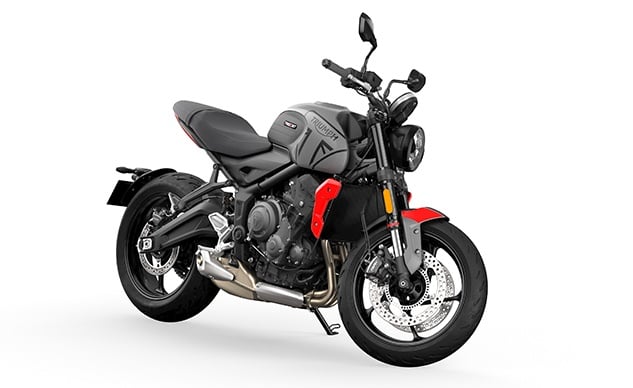
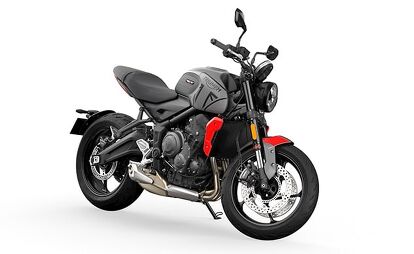




















































































































































































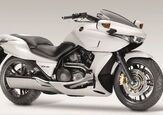
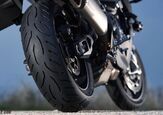
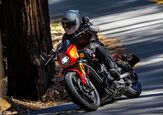
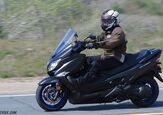
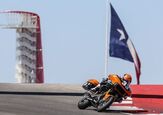
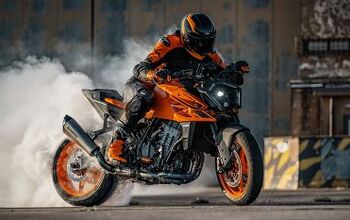

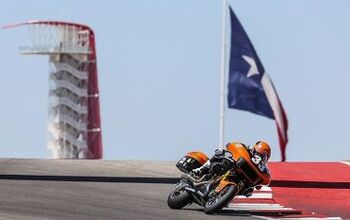

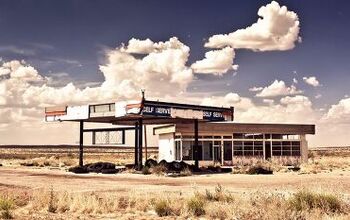
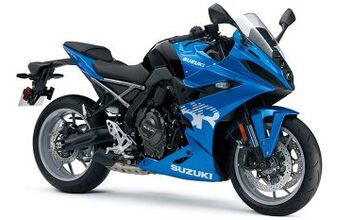
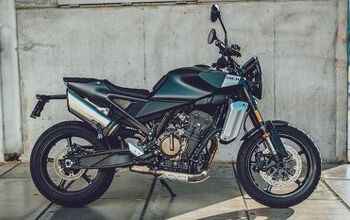
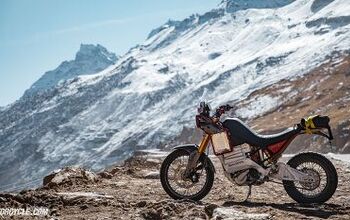
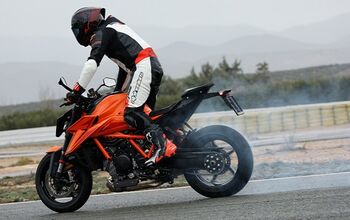
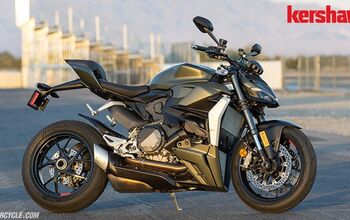
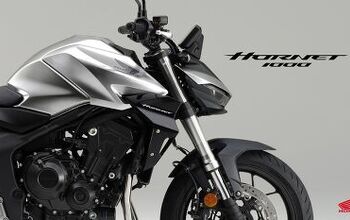
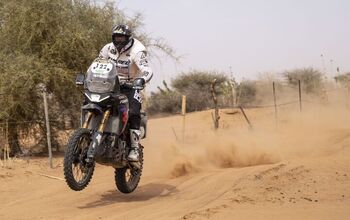
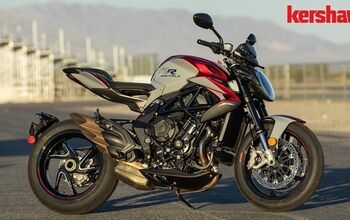

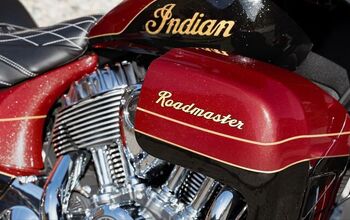


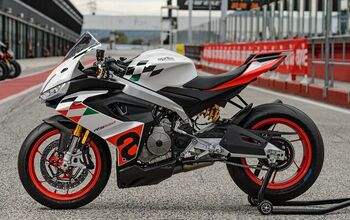
Comments
Join the conversation
I love the concept ... what the bike is trying to do. And I loved the Hinckley Trident. But why did they have to fit it with a gas tank that looks like it was retrofitted from a Torro lawn mower? Then give it a rattle-can paint job with a crooked logo? It's just hideous. Looks like crash damage that was incorrectly repaired with leftover parts.
Somewhere between this, the FZ-09 and the RS660 is the perfect middleweight.......